
Starting June 1st, 2023 Our warehouse fee will be $0.65/cubic foot per month
In effort to lower the warehouse storage fee during inflation, we have went narrow aisle racking.This construction took us four months but the project is finally completed. With narrow aisle racking, we are able to drop storage by 24%.We as partners will go through this inflation together.
06/26/2024
In an increasingly digital world - where purchases are made online, receipts are emailed, and buying histories are easily accessible - many consumers and merchants have started to overlook the packing slip. As an online shopper, a customer never personally look at the packing slip and automatically recycle it if included in their orders.
Even Amazon has started to eliminate packing slips from single-box deliveries to reduce packaging waste. Nevertheless, packing slips remain a common part of the packing process in many ecommerce shipping operations. Let’s dive into the world of the packing slip and its role in ecommerce.
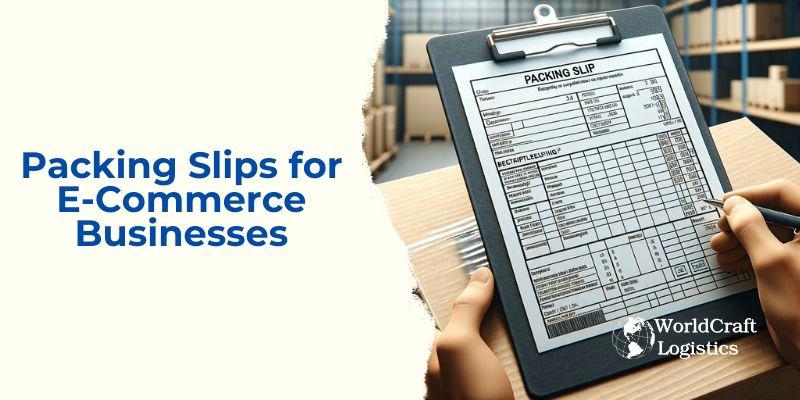
A packing slip, detailing the full list of items in a package, includes SKU numbers, weights, dimensions, and unit counts. Shipping departments use packing slips to determine the inventory needed to accurately fulfill orders. Lastly, the buyer or receiver checks the received items against the packing slip to confirm that all ordered items have arrived.
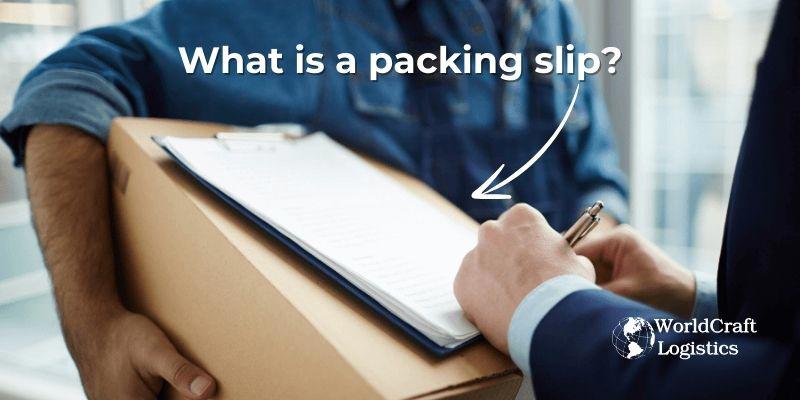

Packing slips list all items ordered by the customer. As ecommerce transactions lack the physical interaction of brick-and-mortar stores, these slips serve multiple purposes to bridge the digital and physical realms via crucial shipping documents. Packing slips are essential for:
In the ecommerce fulfillment process, thorough checking is crucial. Before sealing and labeling a box, a packer must verify that the items inside match the customer's order, including exact counts of multiple SKUs. The packing slip reflects all ordered items and serves as a record of the physical contents included in the shipment. Once verified, the packer can place the printed packing slip in the box and dispatch the order.
The size of the order and products, along with the location of various SKUs in different warehouses, can necessitate splitting an order into separate shipments, meaning items may be sent in different boxes. When an order is divided among multiple boxes, a packing slip helps both the seller and the recipient stay organized.
Packing slips play a crucial role in identifying and sorting damaged items, whether a fragile item breaks during transit or the entire package suffers damage. While delivery exceptions are not uncommon, having a packing slip as a backup can expedite the process of issuing a refund or resending the package.
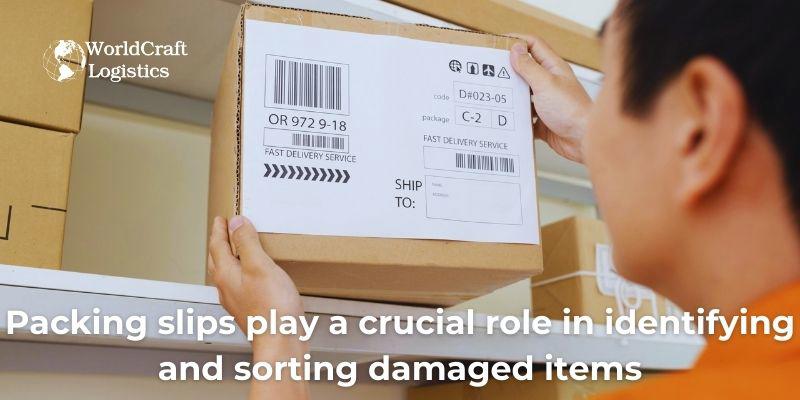
Thereby, you can also find more information about fragile item shipping. In this article, Worldcraft Logistics has given you the most detailed and complete instructions.
Packing slips help identify missing items and verify that all ordered products are received. They serve as a paper trail or record of the shipment's contents. If your order comes in multiple packages, packing slips make it easier to track any discrepancies, especially when ecommerce order tracking indicates complete delivery.
In international shipping, customs authorities often rely on a packing slip to gauge the value of a shipment. Nonetheless, they consistently prioritize a commercial invoice, which necessitates detailed information including goods description, value, seller and shipper details, shipping destinations, and terms of delivery and payment, for swift clearance of packages.
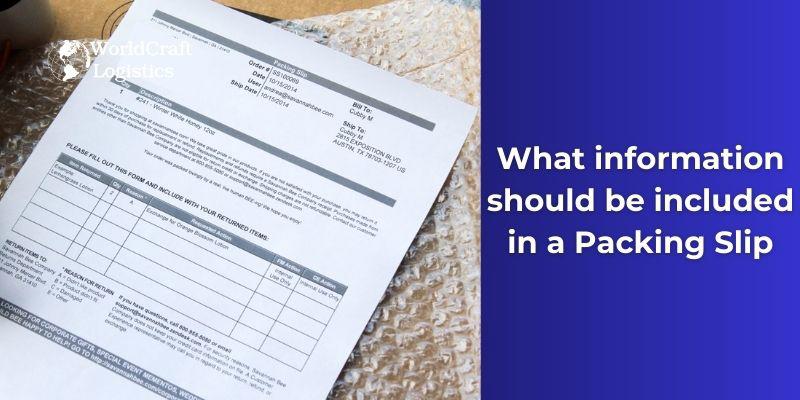
Packing slips encompass crucial details such as price, SKU, and itemized lists, with specifics varying based on the business and its products. Nonetheless, certain consistent elements remain prevalent on nearly all packing slips.
Similar to details on an invoice, this fundamental data serves practical functions for record-keeping, encompassing the purchase order number, contact details, and any encountered transit issues. While shipping labels remain the primary choice for carriers, a packing slip stands as a valuable alternative should complications arise during transit.
Numerous buyers meticulously inspect their received items against the ordered list to verify receipt of everything they've paid for. While some may rely on their confirmation email, many prefer having a packing slip readily available for reference.
Accompanying the invoice, a packing slip will delineate line items for any ordered goods not yet shipped, facilitating their reordering if necessary. While uncommon for such discrepancies to occur unnoticed prior to order submission or fulfillment, any such instances will be distinctly highlighted.
In the process of reviewing items listed on a packing slip, relying solely on product names or SKUs proves insufficient, particularly when multiple units of an item are ordered by sellers. Incorporating a quantity column proves invaluable in streamlining the list, preventing packing slips from extending into several pages, especially in cases where numerous units of the same item are purchased.
SKUs or UPCs, serving as unique identifiers or codes, may hold little significance for consumers, yet they are crucial for sellers in managing their inventory. These numbers serve as the primary reference point for customer inquiries and enable sellers to pinpoint the origins of any encountered issues swiftly.
Shippers and purchasers can cross-reference the slip number with the PO number, depending on the quantity of reference numbers available for orders, to verify the accuracy of shipped and received orders.
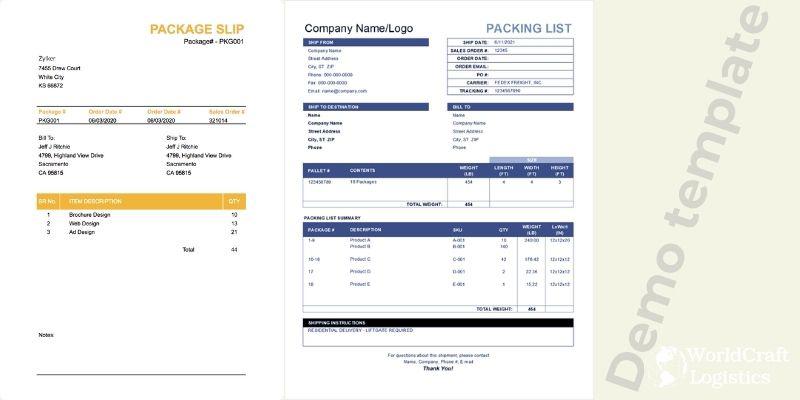
Alongside the shipping address, billing details, order date, and relevant particulars situated at the document's outset, the essence of a packing slip lies in its itemized breakdown. This delineates the contents of the shipment and any omissions therein. For instance, if Product ABC was unavailable at the originating warehouse, it may necessitate a separate dispatch either from an alternate site or upon replenishment of stock at said warehouse.
| Item Number | Description | Quantity | Unit Price | Total |
|---|---|---|---|---|
| [Item #1] | [Description of Item #1] | [Qty #1] | [Unit Price #1] | [Total #1] |
| [Item #2] | [Description of Item #2] | [Qty #2] | [Unit Price #2] | [Total #2] |
| [Item #3] | [Description of Item #3] | [Qty #3] | [Unit Price #3] | [Total #3] |
As you finalize order fulfillments, it's crucial to consider a few additional aspects regarding packing slips and packing lists, even though they need not be overly complex.
In the intricate dance of pick, pack, and ship, a packing slip stands as a crucial checkpoint. For those handling self-fulfillment, the weight of this task can be overwhelming. Without the aid of integrated technology, the margin for errors grows, particularly in the manual generation of packing slips. Industry wisdom dictates the adoption of automated tools to streamline operations and bolster efficiency.
Take, for instance, the modus operandi of WorldCraft Logistics (WCL): Once a pick is finalized, orders seamlessly transition to the packaging phase. Here, our adept packaging team employs scanning technology to meticulously authenticate items and their quantities, ensuring each parcel is packed with optimal safety and efficiency using standardized materials. This same cutting-edge technology, integral to verifying items across the fulfillment spectrum, empowers our warehouses and establishes a seamless connection with our ecommerce platform, enhancing both visibility and accuracy.
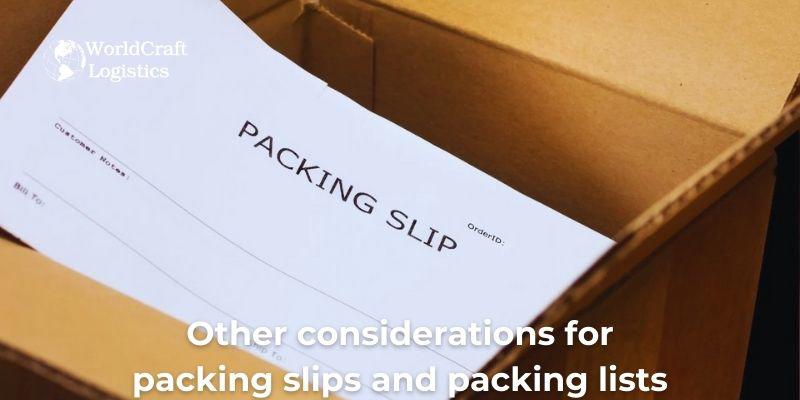
The unboxing ritual offers a pivotal chance to imprint a lasting brand impression, with packing slips serving as a key medium for brand representation. Incorporating your logo onto each packing slip is a fundamental step. Yet, amidst the myriad of papers within your package — spanning inserts, marketing collateral, receipts, and packing slips — striking a balance is imperative. Balancing impactful branding without inundating the customer or jeopardizing crucial information is paramount.
The utility of the packing slip sparks debate: Is it a customer reference or merely extraneous? Opting for an electronic alternative aligns with environmental consciousness, a concern growing among many consumers aiming to minimize their carbon footprint.
Though similar in nature and often nearly identical at a glance, a packing slip and invoice serve different purposes for purchase orders. A packing slip denotes the physical goods being received, whereas an invoice is the financial document of the order, detailing the price of each product, payment terms, method, and date.
In some cases, a packing slip and invoice are intended for different recipients. An invoice is sent to the person responsible for payment, while the packing slip goes to the package recipient. If you order something for yourself, both documents will come to you. However, if you’re buying for someone else, you’ll receive the invoice, and the recipient will get the packing slip.
While both documents originate from the e-commerce store, the invoice is triggered by the payment platform, and the packing slip by the shipping or fulfillment technology. Additionally, all businesses use invoices, but not all businesses use packing slips.
Packing slips remain integral to the packing procedures of numerous e-commerce shipping endeavors. Below, find responses to frequently asked questions concerning packing slips.
Another name for a packing slip is a "waybill." It can also be referred to as a "delivery note" or "shipping list." These terms are often used interchangeably to describe the document that itemizes the contents of a package for the recipient's reference.
In the realm of order fulfillment, the packing slip serves as a pivotal tool for managing customer expectations. Beyond confirming the receipt of items ordered, customers evaluate their experience based on various factors, notably the punctuality of shipping.
WorldCraft Logistics (WCL) emerges as a leading third-party logistics (3PL) provider catering to both small businesses and large corporations. The company adeptly stores inventory, executes order picking and packing tasks, and facilitates swift, cost-effective delivery to end consumers. Bolstered by a widespread network of fulfillment centers across the United States, coupled with advanced technological integration to mitigate stock shortages, WCL extends discounted shipping rates to clients, thereby fostering enhanced conversion rates and ensuring customer retention.
SEO
Digital Marketing/SEO Specialist
Simon Mang is an SEO and Digital Marketing expert at Wordcraft Logistics. With many years of experience in the field of digital marketing, he has shaped and built strategies to effectively promote Wordcraft Logistics' online presence. With a deep understanding of the logistics industry, I have shared more than 500 specialized articles on many different topics.

Education
01/05/2025

Education
02/18/2025

Education
01/01/2024

Education
08/28/2024

Education
11/13/2023